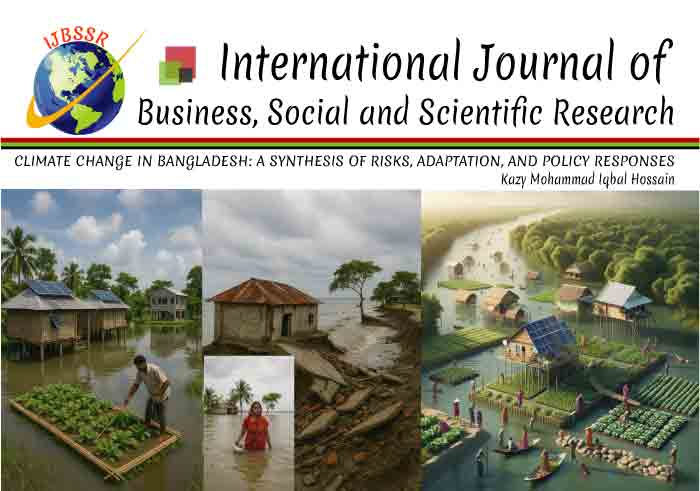CLIMATE CHANGE IN BANGLADESH: A SYNTHESIS OF RISKS, ADAPTATION, AND POLICY RESPONSES

DOI: http://doi.org/10.55706/ijbssr13106
Bangladesh is globally recognized as one of the
most climate-vulnerable countries due to its low-lying geography, dense
population, and limited adaptive capacity. This review synthesizes recent
peer-reviewed literature, national policy documents, and institutional reports
published between 2020 and 2025 to assess the country’s exposure to
climate-induced hazards such as sea-level rise, salinity intrusion, and extreme
weather events. A total of 50 documents were initially identified through
systematic searches, of which 12 were selected based on inclusion criteria
emphasizing empirical rigor, policy relevance, and sectoral focus. Using a
thematic, desk-based methodology supported by a PRISMA-like screening process
and qualitative coding, the study evaluates climate impacts across agriculture,
water resources, public health, and livelihoods, while critically examining
national adaptation and mitigation strategies. Findings reveal that average
temperatures have risen by 0.16°C per decade since 1971, with projections
indicating a 2.69°C increase by 2100. Sea levels could rise by 1.17 meters,
potentially displacing over 900,000 people by 2050. Despite contributing less
than 0.5% of global emissions, Bangladesh ranks among the top ten countries
most affected by climate-related disasters. The review highlights progress in
disaster preparedness and climate-resilient agriculture, but also identifies
persistent challenges in urban adaptation, climate finance, and local
implementation. By integrating climate science with governance and community
resilience, this review offers actionable insights for researchers,
policymakers, and practitioners working toward equitable and sustainable
climate-resilient development.

